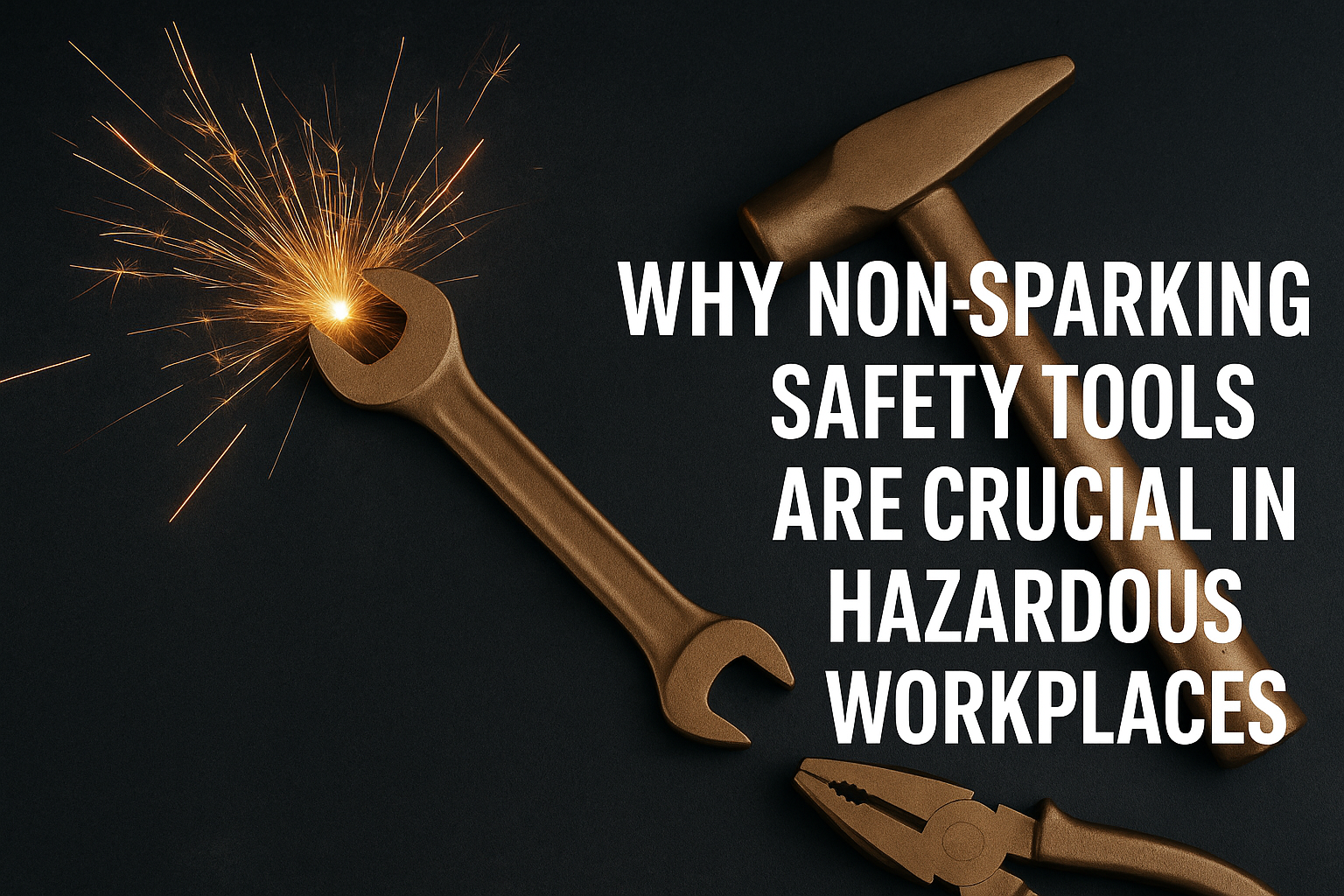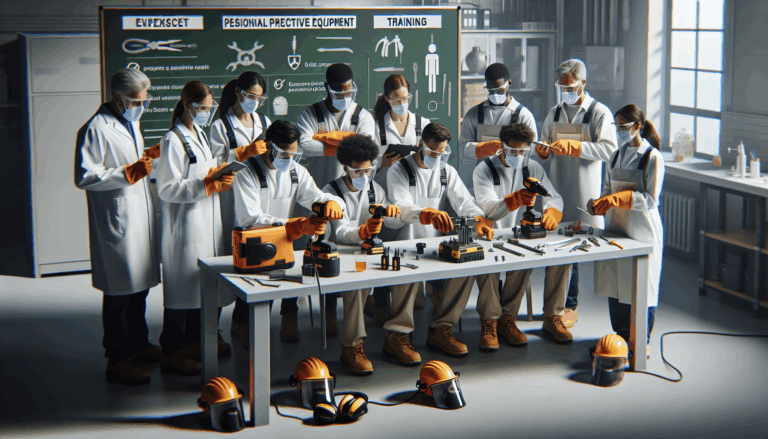What are non-sparking safety tools and when should they be used?

Why Non-Sparking Safety Tools Are Crucial in Hazardous Workplaces
Meta Description: Learn how non-sparking tools play a vital role in preventing fires and explosions in industries like oil and gas, mining, and chemical manufacturing. Discover their benefits, uses, and what to consider when choosing the right tools for high-risk environments.
Staying Safe Where Sparks Can’t Fly
In environments where flammable gases, vapors, or combustible dust are present, safety is non-negotiable. A single spark can cause massive destruction. That’s why non-sparking tools—also called spark-resistant tools—are a must-have in industries working with volatile substances.
These tools are designed to reduce the risk of ignition, offering a layer of protection that traditional steel tools simply can’t provide. Whether you’re managing oil pipelines, mixing volatile chemicals, or working deep underground in mines, using the right tools could mean the difference between routine maintenance and a life-threatening explosion.
What Makes Non-Sparking Tools So Important?
Non-sparking tools are engineered from materials that don’t produce sparks when struck or scraped against other surfaces. Here’s why they’re essential in high-risk workspaces:
-
Preventing Fire Hazards: Many industrial environments contain fuels or chemicals that can ignite with just a spark. Using standard tools can create friction that causes accidental ignition. Non-sparking tools help eliminate that danger.
-
Reducing Static Discharge: Some of these tools are also built to dissipate static electricity, which can trigger explosions just as easily as a spark from friction.
-
Meeting Regulatory Requirements: Industries dealing with explosive materials often operate under strict rules from organizations like OSHA or ATEX. Using non-sparking tools ensures compliance and helps avoid costly fines and shutdowns.
Industries That Rely on Non-Sparking Tools Every Day
Spark-proof tools aren’t just helpful—they’re often required by law in many high-risk sectors. Here are a few industries where these tools are part of the standard operating procedure:
-
Oil & Gas Sector: From exploration to refinery work, flammable gases are always present. Non-sparking hand tools are vital for safe operations.
-
Chemical Manufacturing: When dealing with volatile compounds, even routine tasks like opening a container can be dangerous without the right tools.
-
Mining: Underground conditions are often filled with explosive gases or combustible dust. Tools that can’t produce sparks are non-negotiable.
-
Defense & Aerospace: Fuel handling, repair operations, and storage tasks demand ultra-safe, spark-resistant tools.
-
Firefighting & Rescue Operations: In emergencies, first responders can’t afford risks—spark-proof tools are often part of their standard kits.
Common Scenarios Where Spark-Resistant Tools Are Used
Spark-resistant tools are often used in situations where even minimal friction could spell disaster. Some typical use cases include:
-
Fuel Transfer Tasks: Opening, repairing, or inspecting fuel containers and pipelines.
-
Confined Spaces: Tanks or silos where gas buildup can occur need non-sparking tools to ensure safe entry and work.
-
Routine Maintenance: Equipment like pumps and valves that may retain flammable residues should only be handled with non-sparking tools.
-
Dusty or Vapor-Filled Zones: Whether in a grain mill or paint shop, airborne particles can ignite with a single spark—using safe tools here is essential.
Materials Used to Manufacture Non-Sparking Tools
The materials used to build these tools are key to their effectiveness. Unlike steel, these alloys won’t produce sparks:
-
Beryllium Copper (Be-Cu): Highly durable and corrosion-resistant, ideal for most hazardous tasks.
-
Aluminum Bronze: Strong, reliable, and spark-proof—widely used in industrial environments.
-
Titanium: Ultra-lightweight and corrosion-resistant, though more expensive. Used in specialized applications requiring both strength and non-magnetic properties.
These materials are carefully chosen to provide safety while also withstanding the wear and tear of industrial use.
How to Choose the Right Non-Sparking Tool Set
Not all non-sparking tools are created equal. Here are a few factors to help you pick the right set:
-
Certified Quality: Look for tools that meet international safety certifications such as ATEX or OSHA. Brands like Ampco and CS Unitec are well-regarded in the field.
-
Right Tool for the Right Job: Make sure you’re using the correct type of tool for your task—whether it’s a hammer, spanner, chisel, or screwdriver.
-
Fit for Your Environment: Some tools are also non-magnetic or corrosion-resistant, which is important in specialized environments like naval ships or chemical processing facilities.
Safety Best Practices When Using Non-Sparking Tools
Even with the best tools, proper handling is crucial. Here are some basic safety tips:
-
Inspect Tools Frequently: Damage or corrosion can compromise the spark-resistant properties of your tools.
-
Store in Clean, Dry Conditions: Protect your tools from exposure to contaminants that could make them unsafe.
-
Train Your Team: Make sure all workers know why and how to use these tools. Awareness is half the battle in any safety protocol.
Final Thoughts
In any environment where flammable materials are present, the right tools can save lives. Non-sparking safety tools aren’t just a precaution—they’re a fundamental part of responsible operations. Whether you’re managing fuel systems, working in chemical labs, or operating in underground mines, spark-resistant tools help ensure that safety remains your top priority.
By investing in certified, high-quality non-sparking tools and following safety procedures, you’re not just checking a compliance box—you’re actively protecting your workforce and facility from potentially devastating incidents.







